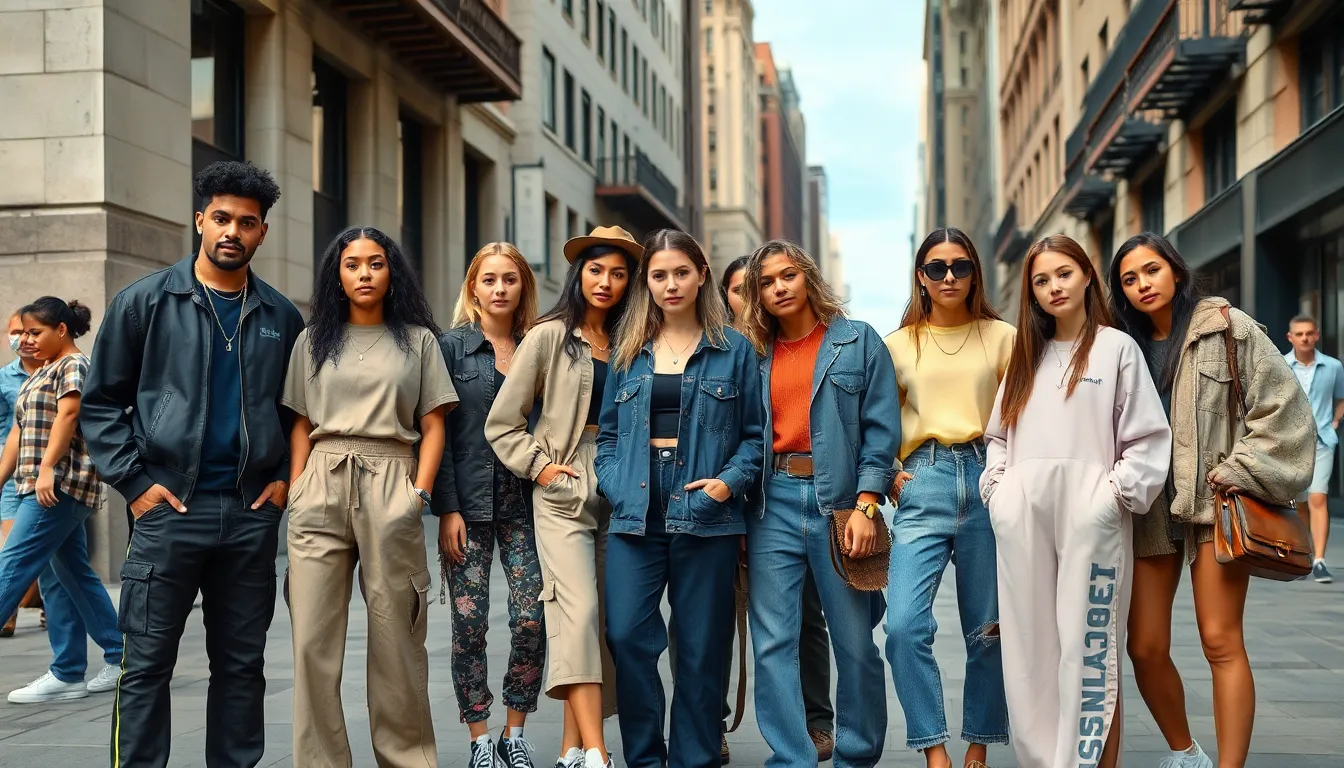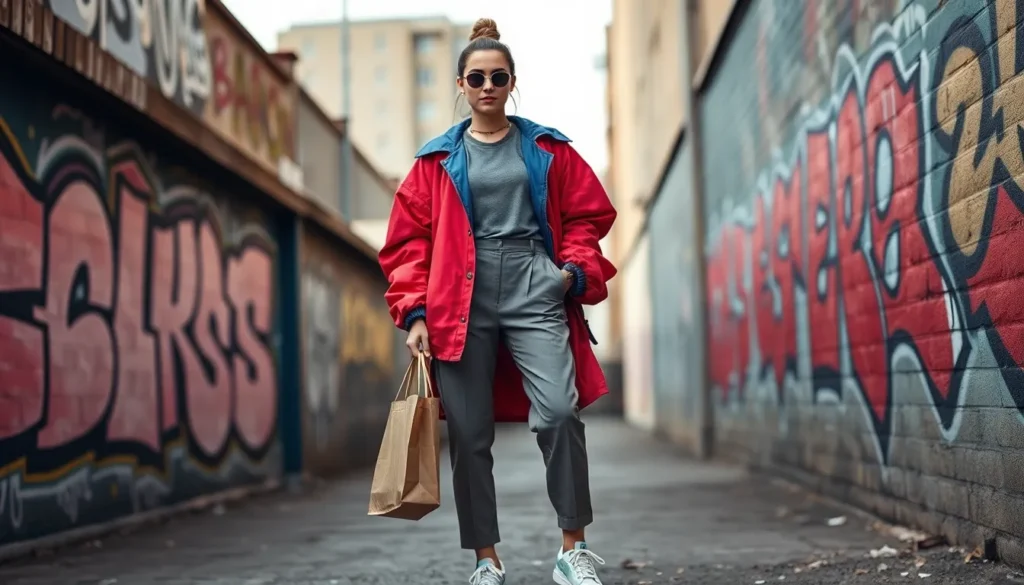Contemporary fashion is a vibrant tapestry that reflects the ever-evolving landscape of culture, technology, and individual expression. It transcends traditional boundaries, merging high fashion with street style, sustainability with luxury. This dynamic realm invites everyone to explore and redefine their personal style while staying attuned to global trends.
As society shifts, so does the fashion industry, embracing inclusivity and innovation. Designers are now more aware of their impact on the environment, leading to a rise in sustainable practices. This article delves into the key elements shaping contemporary fashion, highlighting influential designers, emerging trends, and the cultural narratives that inspire today’s wardrobes. Whether you’re a fashion enthusiast or just looking to update your closet, understanding contemporary fashion opens the door to a world of creativity and inspiration.
Table of Contents
ToggleOverview of Contemporary Fashion
Contemporary fashion represents a vibrant fusion of cultural influences, technological advancements, and personal expression. This sector adapts rapidly to societal shifts, integrating high fashion aesthetics with street style elements, thus blurring traditional boundaries.
Key Characteristics of Contemporary Fashion
- Inclusivity: Contemporary fashion actively embraces diversity, featuring a range of body types, gender expressions, and cultural backgrounds. This shift expands representation on runways and in marketing campaigns.
- Sustainability: The industry increasingly prioritizes eco-friendly practices, with designers adopting sustainable materials and ethical production methods. Brands focus on reducing waste and promoting circular fashion.
- Technology Integration: Advancements in technology influence design, production, and retail. Innovations like 3D printing and augmented reality reshape consumer experiences, allowing for personalized shopping interactions.
- Trend Fluidity: Trends emerge and evolve swiftly, often influenced by social media. Fashion brands respond to shifts in consumer preferences, ensuring collections reflect current cultural narratives.
Influential Designers and Brands
Several contemporary designers lead the movement, including:
- Virgil Abloh: Known for merging streetwear with luxury fashion through his brand, Off-White.
- Rihanna: Pioneering inclusivity and diversity with her Fenty Beauty line, influencing apparel with size and style variations.
- Wendy Nichol: Advocating sustainability within her designs, emphasizing handcrafted and eco-conscious materials.
Emerging Trends
Contemporary fashion trends shift towards:
- Gender-neutral clothing: Collections increasingly feature unisex designs, promoting fluidity in fashion.
- Vintage revival: Nostalgic styles gain popularity, with vintage pieces often reinterpreted in modern contexts.
- Athleisure: This trend merges comfort and style, making sportswear suitable for casual daily wear.
Contemporary fashion encapsulates an evolving dialogue between society and design, reflecting collective values, desires, and innovations.
Key Trends in Contemporary Fashion

Contemporary fashion features several defining trends that reflect current cultural, technological, and socio-political dynamics. These trends showcase the industry’s evolution toward inclusivity, sustainability, and creative expression.
Sustainable Fashion
Sustainable fashion emphasizes eco-friendly practices in design, production, and distribution. Brands opt for organic materials, promote fair labor, and implement circular fashion concepts, such as upcycling and recycling. Notable examples include Stella McCartney, who pioneers cruelty-free clothing, and Patagonia, known for its commitment to environmental activism. Research shows that the global sustainable fashion market is projected to reach $8.25 billion by 2023, highlighting its growing significance in the industry.
Street Style Influence
Street style acts as a powerful catalyst for contemporary fashion trends. Designers draw inspiration from urban environments, integrating elements like graphic tees, oversized silhouettes, and bold accessories into high-fashion collections. Influencers play a crucial role in popularizing these styles through social media platforms, making them accessible to a broader audience. For instance, designers such as Balenciaga and Off-White incorporate streetwear aesthetics into their collections, bridging the gap between luxury and everyday attire.
Gender Fluidity in Fashion
Gender fluidity redefines traditional fashion norms, promoting inclusivity and breaking down barriers. Designers offer clothing that transcends gender labels, featuring unisex styles and collections aimed at all body types. Major brands like Telfar and JW Anderson exemplify this movement by showcasing gender-neutral designs on the runway. According to a 2021 report, the gender-neutral segment is expected to grow significantly in the coming years, reflecting a societal shift towards acceptance and diversity in self-expression.
Fashion Icons and Influencers
Fashion icons and influencers play a pivotal role in shaping contemporary fashion trends. Their unique styles and large followings inspire widespread changes in consumer preferences and industry standards.
Impact of Social Media
Social media significantly influences contemporary fashion, facilitating immediate access to trends and styles. Platforms like Instagram and TikTok enable influencers to showcase their outfits, rapidly disseminating fashion ideas across a global audience. Brands leverage these influencers to reach specific demographics, enhancing visibility and engagement. The rise of social media also promotes collaboration between influencers and designers, giving birth to exclusive capsule collections and innovative marketing campaigns. Metrics show that influencer-driven campaigns yield higher engagement rates, boosting brand loyalty and expanding audiences.
Notable Designers in Contemporary Fashion
Notable designers define the landscape of contemporary fashion through innovative elements and diverse perspectives.
- Virgil Abloh – Known for merging streetwear with luxury, Abloh’s work at Louis Vuitton emphasizes cultural dialogue and inclusivity.
- Rihanna – Fenty’s groundbreaking approach addresses beauty and body diversity, setting new standards with an emphasis on representation.
- Stella McCartney – A pioneer in sustainable fashion, McCartney focuses on eco-friendly materials and ethical practices, influencing industry norms.
- Telfar Clemens – Telfar’s unisex designs challenge traditional conventions, creating a space for gender fluidity within fashion.
- JW Anderson – Recognized for avant-garde collections that blur gender lines, Anderson promotes creativity and individuality.
Fashion icons and designers contribute significantly to the evolution of contemporary fashion, reflecting broader societal shifts while inspiring new generations of fashion enthusiasts.
Cultural Influences on Contemporary Fashion
Cultural factors significantly shape contemporary fashion, driving innovation and inspiring various styles across the globe. This section explores key influences, including globalization and the impact of art and music.
Globalization and Fashion
Globalization fosters diverse cultural exchanges, impacting fashion trends significantly. Designers draw inspiration from various cultures, leading to the incorporation of traditional textiles, patterns, and designs. Brands like Dior and Gucci showcase unique elements from global fashion markets, enhancing their collections with multicultural influences. The rise of fast fashion brands enables rapid distribution and adaptation of trends worldwide, as they leverage local aesthetics to appeal to increasingly global audiences. For instance, brands such as Zara and H&M adapt their offerings to reflect regional preferences, ensuring international consumers feel represented.
The Role of Art and Music
Art and music serve as powerful catalysts for contemporary fashion trends. Designers often merge artistic expression with clothing, creating collections that embody distinct themes or movements. For example, collaborations between fashion designers and artists, like the partnership between Takashi Murakami and Louis Vuitton, exemplify this fusion. Music, particularly genres like hip-hop and punk, influences style choices and disrupts traditional fashion norms. Artists such as Beyoncé and Pharrell contribute to fashion dialogues, seen in their signature styles that challenge conventional aesthetics. Events like music festivals also become platforms for style experimentation, showcasing eclectic looks that later inspire mainstream fashion lines.
Future of Contemporary Fashion
The future of contemporary fashion hinges on innovation, inclusivity, and sustainability. Designers are expected to embrace technological advancements to create smart textiles that adapt to individual needs, enhancing comfort and functionality. Wearable technology, such as clothing integrated with health-monitoring sensors, signifies a shift towards enhanced consumer experience.
Data-driven design will play a pivotal role, allowing brands to analyze consumer preferences and trends more effectively. Predictive analytics can forecast shifts in styles, enabling brands to remain relevant in a fast-paced market. For example, artificial intelligence tools will assist designers in creating collections that anticipate consumer demand, streamlining production processes.
Sustainable practices will shape future fashion, as consumers increasingly prioritize eco-friendly strategies. Brands are likely to focus on circular fashion, promoting recycling and upcycling initiatives. The use of biodegradable materials and the implementation of carbon-neutral manufacturing processes will become standard, reflecting a commitment to environmental stewardship.
Inclusivity is set to remain a crucial aspect of fashion’s evolution. As body positivity movements gain traction, brands will broaden their size ranges and celebrate diverse aesthetics. In addition, gender-neutral collections will challenge traditional norms, fostering a more inclusive environment for all consumers.
Global collaborations and cross-cultural inspirations will persist, enriching contemporary fashion with diverse perspectives. Designers will draw from global influences, merging traditional artisan techniques with modern aesthetics. Partnerships between fashion brands and cultural institutions will enhance creative exchanges, promoting cultural heritage while driving innovation.
Social media’s role in shaping trends will continue to expand, allowing emerging designers and underground movements to gain visibility. Platforms like TikTok and Instagram will facilitate rapid trend cycles, bringing niche styles into the mainstream. This democratization of fashion will encourage creativity and self-expression among consumers.
The future of contemporary fashion promises a dynamic landscape characterized by technological integration, sustainability, inclusivity, and cultural richness.
Contemporary fashion stands at a vibrant crossroads of culture and innovation. With a focus on sustainability and inclusivity it reflects the diverse voices and values of today’s society. Designers and influencers alike are breaking boundaries and challenging traditional norms, paving the way for a more expressive and eco-conscious industry.
As trends evolve and new ideas emerge the impact of technology and social media will only grow stronger. The future promises exciting developments that will further intertwine fashion with cultural narratives. Ultimately contemporary fashion is not just about clothing; it’s a dynamic expression of identity and creativity that continues to inspire and transform.




